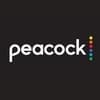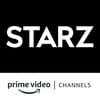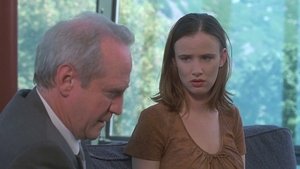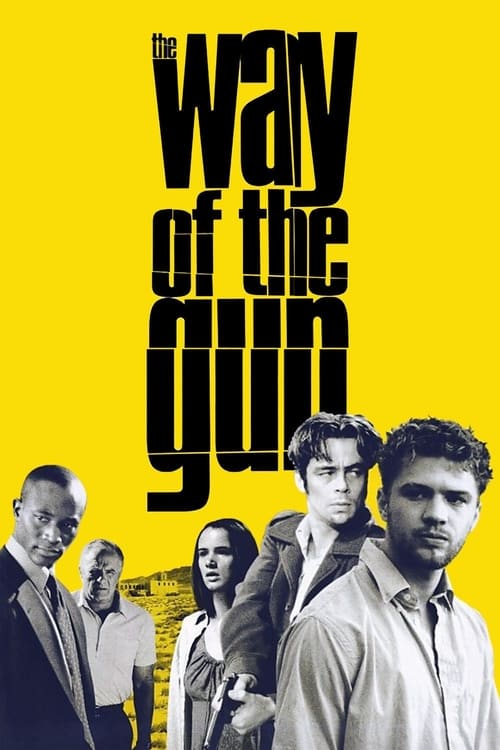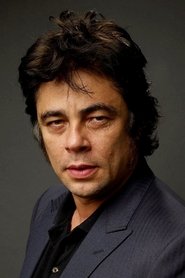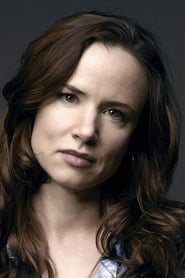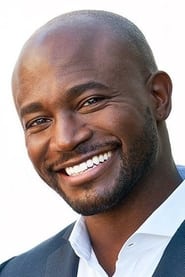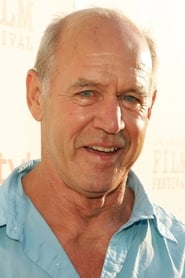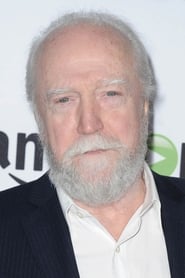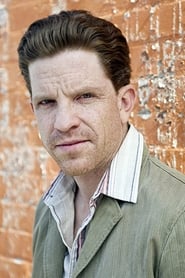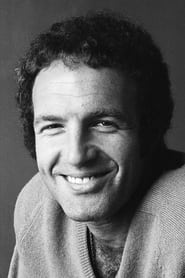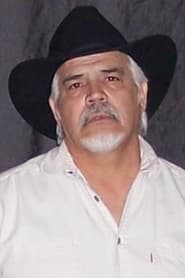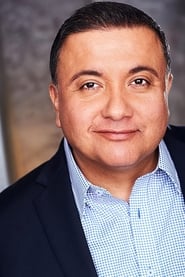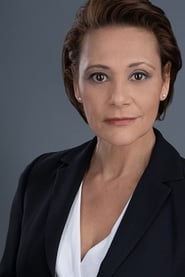Cast
View AllRyan Phillippe
as Mr. Parker
Benicio del Toro
as Mr. Longbaugh
Juliette Lewis
as Robin
Taye Diggs
as Jeffers
Nicky Katt
as Obecks
Geoffrey Lewis
as Abner Mercer
Scott Wilson
as Hale Chidduck
Dylan Kussman
as Dr. Allen Painter
James Caan
as Joe Sarno
Sarah Silverman
as Raving Bitch
Kristin Lehman
as Francesca Chidduck
Henry Griffin
as P. Whipped
Armando Guerrero
as Federale #1
Andres Orozco
as Federale #2
Irene Santiago
as Sloppy Prostitute
Crew
Director
- Christopher McQuarrie
Producer
- Kenneth Kokin
Reviews
Wuchak
**_Convoluted crime drama in the wake of Pulp Fiction_**
Two low-life criminals (Ryan Phillippe & Benicio Del Toro) kidnap a pregnant surrogate (Juliette Lewis) of a rich couple who, unknowingly, has ties to the mob.
"The Way of the Gun" (2000) is an offbeat flick in the tradition of "Pulp Fiction" written & directed by a proven screenwriter and featuring a quality cast, which includes James Caan. It's touted as a "modern Western" with two protagonists patterned after Butch Cassidy and the Sundance Kid (their names in the film are the last names of Butch & Sundance).
It starts out as a black comedy with cussing every other word, but then morphs into a serious crime drama with flashes of gunplay. The score is notable.
Two issues hinder the film: (1) A plot that becomes convoluted and therefore increasingly unbelievable, and (2) unlikable characters, except for maybe the surrogate. Concerning the second issue, I understand the concept of antiheroes, but even antiheroes require some redeemable or universally human qualities to make the audience root for them or care about them. Wolverine and Clint Eastwood's Western characters, like Josey Wales, are good examples, as are the antiheroes in films like "Runaway Train" and "Apocalypse Now," two cinematic masterpieces.
These two points naturally create disinterest and tempt the viewer to tune out. The first time I watched it I gave up by the 90-minute mark with a half hour to go, I could care less about the characters, their story or how it turned out, even though I tried.
On my second viewing, I decided to pay closer attention and stick with the movie till the end. I'm glad I did because this is a well-written examination of crime & violence and the fools involved. An attempt is made to flesh-out all the main characters and I'm talking no less than nine people, each of whom are a piece of the interlocking puzzle, often with their own agenda.
While it's no where near great like the seminal "Pulp Fiction," it has style and glimmerings of depth. If you can get past the convoluted story and unlikable characters, it certainly has its points of interest, like well-scripted dialogues and Del Toro's towering performance, not to mention Taye Diggs's interesting heavy.
The film was shot in Utah in the Salt Lake City area.
GRADE: B-
Jan 20, 2023
Thematic Analysis
As a dramatic work, The Way of the Gun examines complex human relationships and emotional struggles against the backdrop of contemporary challenges that mirror our own experiences. The character development particularly stands out, offering viewers a chance to reflect on their own life journeys.
Director Christopher McQuarrie brings their distinctive visual style to this film, continuing their exploration of themes seen in their previous works while adding new elements. Their approach to character development and emotional depth creates a viewing experience that rewards close attention.
Released in 2000, the film exists within a cultural context that continues to evolve with our understanding of its themes. Its reception demonstrates the diverse reactions to its artistic choices and its place in cinema history.
Did You Know?
- The production of The Way of the Gun took approximately 13 months from pre-production to final cut.
- With a budget of $8.5 million, the film proved to be a financial success, earning back its investment and more.
- The final cut of the film runs for 119 minutes, though the director's initial assembly was reportedly 159 minutes long.
- The film contains approximately 2491 individual shots.
- The director insisted on using practical effects whenever possible, reserving CGI for only the most necessary scenes.
- The screenplay went through 11 major revisions before the final shooting script was approved.
Historical Context
- In 2000, when this film is released:
- Digital technology was disrupting traditional media and entertainment.
- The September 11 attacks changed global security and politics.
- Digital filmmaking technologies were transforming production processes and creating new opportunities.
How This Film Stands Out
While The Way of the Gun shares thematic elements with other films in its genre, it distinguishes itself through its unique approach to storytelling, visual style, and character development.
Unlike Batman, which focuses more on action than character development, The Way of the Gun offers a fresh perspective through its innovative visual language and narrative structure.
While films like The Silence of the Lambs and Fargo explore similar territory, The Way of the Gun stands apart through its distinctive directorial vision and pacing.
This film's unique contribution to cinema lies in its bold artistic choices and willingness to challenge viewer expectations, making it a valuable addition to its genre.
Details
- Release Date: September 8, 2000
- Runtime: 1h 59m
- Budget: $8,500,000
- Revenue: $19,125,401
Where to Watch

